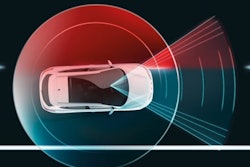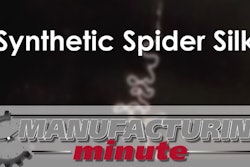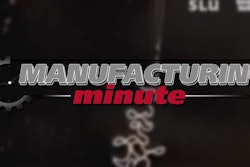Manufacturers across the industry spectrum are looking for ways to leverage the Industrial “Internet of Things” (IIoT) to transform their productivity, efficiency and business agility. Developments like machine-to-machine (M2M) communication and Big Data analytics of sensor data offer exciting opportunities to achieve step changes in automation efficiency, while setting the stage for new business models that give manufacturers an edge in the global marketplace.
However, in order to realize the potential of IIoT, manufacturers must look beyond their technology infrastructures and focus on a tricky challenge: dealing with the technological and cultural divide that often separates their information technology (IT) and operational technology (OT) organizations.
In most industrial organizations, IT and OT live essentially in two separate worlds, driven by different priorities. For IT, innovation is the priority, often leading to continual change and upgrading. OT’s priority is ensuring the uptime of production automation systems. For OT, technological change equals risk, which is why automation systems are often in service for years, if not decades. This difference in priorities helps explain why OT often insists on keeping automation systems isolated from IT’s constantly evolving infrastructure.
But the IIoT changes this dynamic, creating a new imperative to share data from SCADA (Supervisory Control And Data Acquisition) and other automation systems and sensors managed by OT with platforms managed by IT, such as enterprise resource planning (ERP) and analytics systems. How can manufacturers redefine the relationship between OT and IT to enable IIoT strategies, while ensuring that their competing priorities are met?
Multiple Paths
Every manufacturing organization is different, so there is no “one size fits all” solution. In fact, our experience suggests there are a few possible approaches to merging OT and IT.
The first approach is to effectively merge OT and IT into a single, integrated organization. At first glance, this seems like the most direct approach, essentially forcing OT and IT to work together. But this does not necessarily erase the ingrained cultural differences. For example, IT may try to impose a standards-based approach on an OT group that is used to systems specialized for particular production tasks. Unless IT has a clear understanding of the requirements of these automation systems, the result can be a lack of coordination, which could lead to decreased system stability. OT must have a voice in the combined organization for this approach to work.
A second approach is to create an entirely new technology team responsible for all OT and IT functions. Such a team would be free from traditional competing priorities and, thus, able to provide a unified, coordinated approach to managing both OT and IT. This approach makes sense for a new organization or for an established enterprise spinning off a new satellite company. But for most manufacturers with established technology groups and lots of legacy infrastructure, this alternative may not be a workable solution.
There is a third approach — one that’s increasingly common among innovative organizations, where we’re seeing the emergence of a new breed of “industrial technologists” with a combined IT/OT perspective. They recognize the critical need for stable, highly available automation systems. But they also recognize that realizing their IIoT strategy requires a high level of enterprise system integration and analytics. Because they live in both worlds, these industrial technologists play a key role in meeting both OT and IT priorities.
Managing Risk
Regardless of the approach taken to merge OT and IT functions, managing the risk inherent in change is crucial. The exciting opportunities of the IIoT are all well and good, but OT must have confidence that SCADA systems and data will maintain the highest levels of availability. That means building in fault tolerance for all business-critical manufacturing automation systems.
Global cost pressures make the issue of availability especially critical. With technology staffs cut to the bone, it is essential to ensure that automation systems throughout the plant stay up and running without interruption. Building in availability to the intelligent automation infrastructure is essential to prevent unplanned outages that could impact the bottom line. In addition, building in availability helps avoid unproductive finger-pointing between OT and IT if an outage occurs in a converged IIoT infrastructure.
Recognizing the Value
For most manufacturing enterprises, merging OT and IT functions will likely be a gradual process. To help facilitate that process, it is important that OT recognize not just the “how” of transitioning to IIoT, but also the “why”. Showing the OT team the value of the IIoT — and the value of allowing greater connectivity to their automation systems and data — will go a long way to encouraging acceptance.
One example near and dear to OT is that of predictive maintenance. Sensor data on a range of operational parameters for production equipment or components can be collected and sent to analytics engines or machine learning systems. These analytics can detect anomalies — such as vibration patterns or temperature excursions — before a failure occurs. This can dramatically reduce unplanned downtime. But it also helps identify the optimum maintenance or replacement intervals, minimizing costly planned downtime and capital expense.
For manufacturers struggling to optimize efficiency and increase agility, the benefits of the IIoT are too attractive to ignore. Taking a thoughtful, strategic approach to merging OT and IT functions in a way that aligns with their organizational culture — while taking steps to mitigate the risk of change — will help smooth the transition to the intelligent, automated manufacturing enterprise they strive to be.
John Fryer is Senior Director of Industry Solutions at Stratus Technologies.























